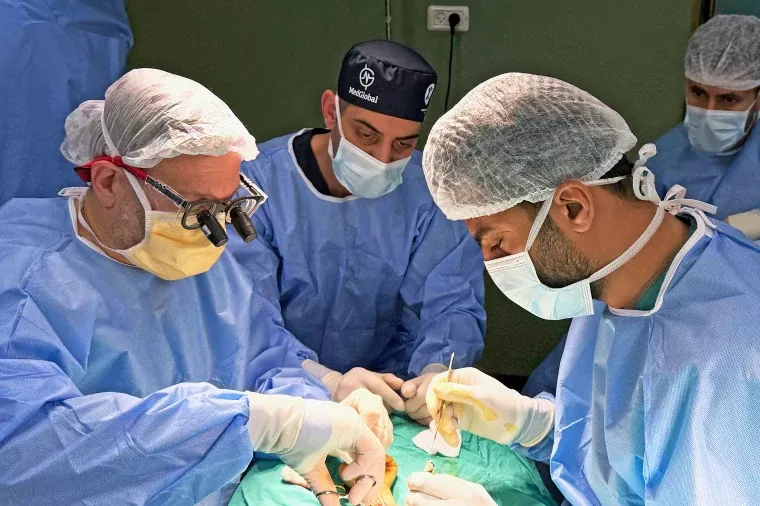A pilonidal cyst is a pain in the butt in more ways than one. The pain and swelling, the ever-present risk of infection, can wear you down as you see your medical bill add up. But there are more issues for many patients than pain in the body, like cash. Surgery is the best answer to the problem, but is pilondial cyst medical treatment covered by insurance? The brief answer is yes, but the long-term picture is complex. That’s what you should know about how it operates, what to anticipate from different policies and things that you may do today to prepare financially.
Is The Surgery For Pilonidal Cyst Usually Insured?
Pilonidal cyst is not highly costly if its surgery is considered medically necessary, hence insurance will usually cover it. “This is not an elective, this is a painful condition that, if left untreated, will likely become worse. Insurance companies realize that pilonidal cysts can cause recurrent infections, abscesses and significant disruption to your activities etc so pilonidal cyst surgery is a matter of medicine not advertised as a cosmetic procedure.”.
But how much of it is paid is in your plan. A plan could pay almost the entire amount and require you to make only a token co-payment, for example, whereas another may cost you substantial out-of-pocket payment if your deductible has not yet been met. These are a few of the reasons we recommend phoning your insurance company before scheduling surgery.
What Costs Should Patients Expect?
Even if surgery is paid for, you may still have outlay. And that outlay literally belongs in three easy buckets: deductibles, co-pays and co-insurance. Your deductible is your cost before your insurance company covers your medical expenses. If you haven’t met your yearly deductible so far in the year, what this means is that you might be paying a higher percentage of the bill on your surgery.
These are the out-of-pocket fees you pay upfront for the service and what proportion of that fee you share with your carrier. With a surgery, for example, if your policy covers 80 percent of the fee, you get stuck with the remaining 20 percent. And if your surgeon isn’t in your network, you might experience sticker shock. Getting to know them ahead of time keeps bites out of your budget from stinging.
Do You Even Require Pre-Approval By Insurance?
For very large groups of patients, pre-approval — or prior authorization — is a key part of the process. Insurance will often demand documentation of the necessity for surgery before they will authorize its coverage. Your surgeon’s office will facilitate this by faxing doctor’s notes explaining your pilonidal cyst symptoms, how often you become infected and any pilonidal cyst treatments you have had in the past.
Without pre-authorization, you may have your claim rejected. That could make you responsible for the entire price of the procedure. This is precisely why it is so vital to ask both your doctor and your insurance company if pre-authorization is necessary. This extra step can and will save you so much money and time Delivered to your inbox every day.

What Effect Does the Surgery Type Have on Coverage?
The surgery for a pilonidal cyst is not something standardized. The surgeon has many different surgical options to perform, from the open excisional to the flaps and the minimally invasive approach. In most cases, the insurance company covers all of these types, if the surgeon orders them as medically necessary.
With that in consideration, if your surgeon is recommending a less common or new procedure, double-check with your carrier. Newer procedures can have extra approval depending on the plan. By doing a little advance research, you can ensure the procedure you and your doctor have planned out won’t deliver surprise costs later.
What about Anesthesia and Facility Charges?
In the case of surgery, the charge for the procedure is not just the surgeon’s fee. Anesthetic charges, operating room charges, and facility charges are also items that need to be charged. Fortunately, insurance will pay for these under the cost of the procedure itself, although your out-of-pocket cost will likely still be contingent upon whether or not the participating hospital or surgery center is in-network. Requesting your provider to provide an itemized estimate beforehand can also provide you with an idea of the overall cost.
What About Follow-Up Care?
Healing is a crucial part of therapy and at times is inclusive of additional expenses. Wounds from pilonidal cysts may need dressing, follow-up appointments and possibly wound care center trips. Even though most of them are covered under your policy, all policies are not identical. For instance, some of the wound care items such as a dressing or a special patch might not be completely exempted.
You can have a nurse help you recover if your plan covers home health care benefits. And what I think is that when you look ahead of time before surgery what is covered, it can keep you from having unnecessary stress while recovering.
How Can Patients Prepare Financially?
The key thing you can do is call your surgeon’s office and your insurance company before the procedure. Ask your insurer: What percent of the procedure is covered? (Perhaps 100 percent or you would pay for, say, half.) How much do you pay as a deductible? Do you have to get pre-authorization? You should also inquire if your surgeon and facility are part of the network. If not, inquire if you can be treated by someone within the network to save you money.
Financial consultants in most surgery centers can provide quotes and arrange payment plans. Using such services make everything easier.
When Do You Need to Inform Your Insurance?
Best-case, I’d phone your insurance the moment your doctor presented surgery. Having a head start allows you to get approvals, verify coverage and organize for any expenses. Waiting until the end could equal dozens of days wasted and surprise bills. View it as part of your planning, just as you would arrange to get a ride home or free up time to recover from surgery.

Why Insurance Coverage Matters for Patients?
Insurance will cover pilonidal cyst surgery for most people, which is always a blessing to find out. The surgery is already a big step toward healthier times, and taking away financial uncertainty only makes that a more straightforward decision. Patients just want to heal without the aggravation of worrying about how someone is going to be able to pay for care.
Conclusion
Insure will pay for practically all pilonidal cyst surgery and you’ll never have to go through that agony and have the disease recur on you. But all policies are different and how much you’d ultimately pay would very much depend on such things as your deductible, co-insurance and whether your surgeon is in or out of your network. Pre-approval is usually necessary, so be sure to call your insurer beforehand. There is also finding healing well, recuperating comfortably, and lastly putting pilonidal cyst pain where it belongs: in your rearview mirror. Prepare yourself and stand behind you. By getting the proper prep done and knowing what’s ahead for you, you can continue to move forward–and do so confidently–with an eye toward recovery, and comfort in addition to pilonidal cyst pain being where it should be: in the rearview mirror.








